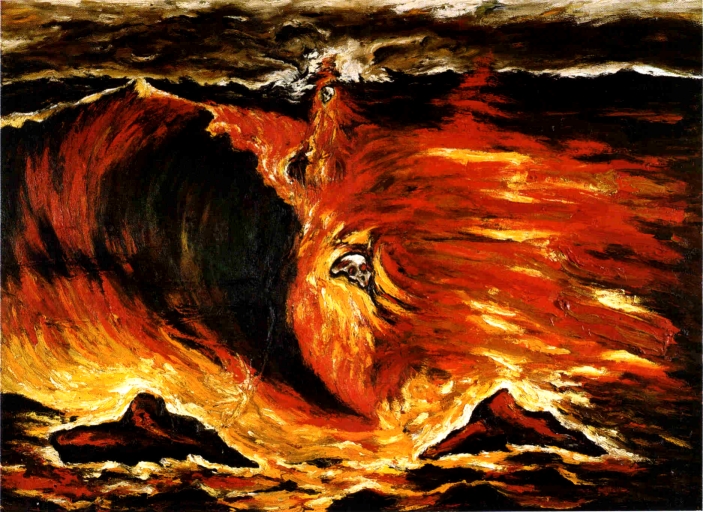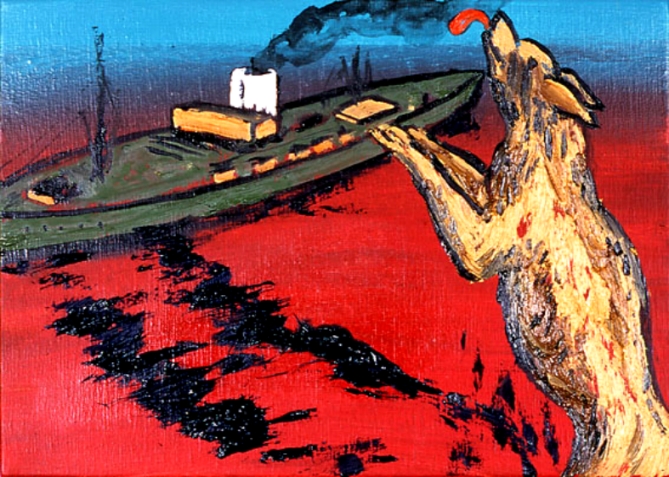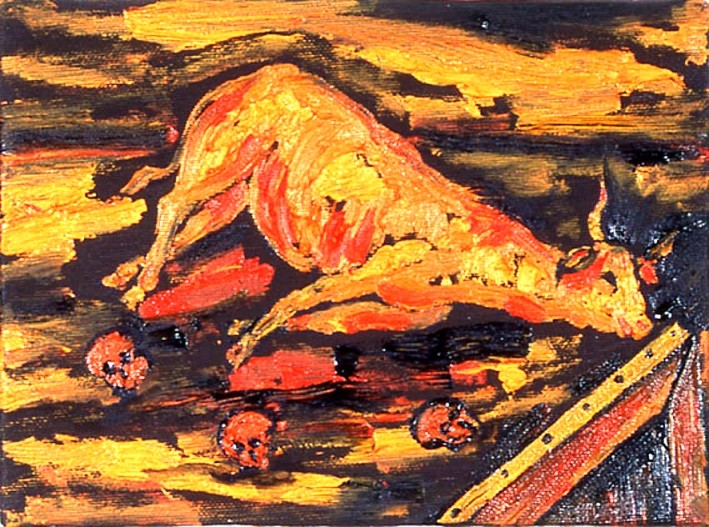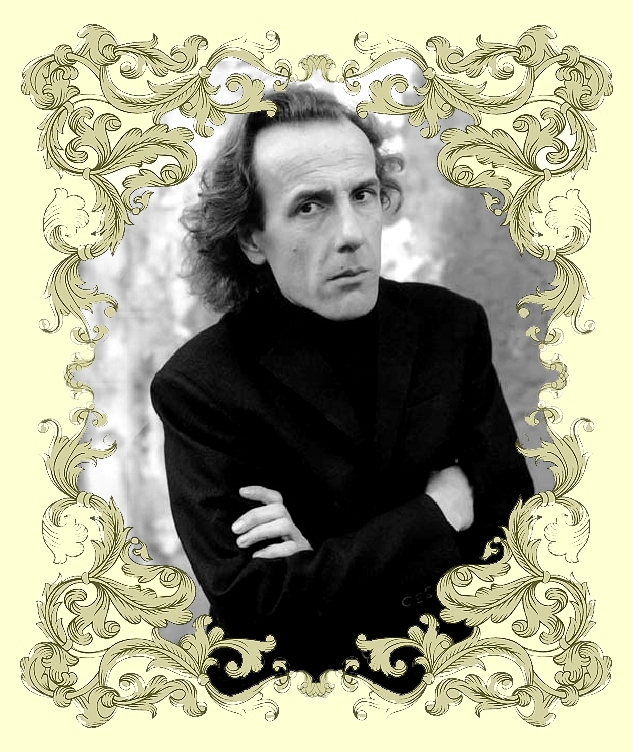ENZO CUCCHI
MUSICA EBBRA
ENZO CUCCHI
UN SOSPIRO DI UN'ONDA
ENZO CUCCHI
ONDEGGIAVANO
ENZO CUCCHI
GOCCE DI TERRA
ENZO CUCCHI
LO ZINGARO CALVO
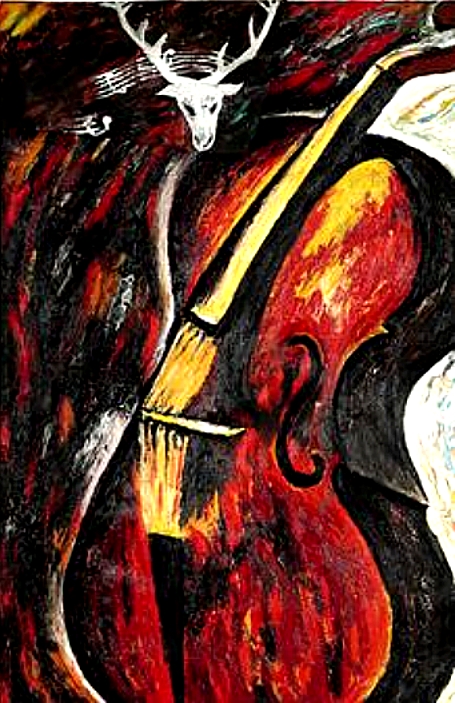
ENZO CUCCHI
BIOGRAPHY
Enzo Cucchi was born in 1949 in Morro d'Alba,
a farming village in the province of Ancona
in central Italy. As an autodidactic painter
Cucchi was lauded in his early years even
though he was more interested in poetry.
He frequently visited poet Mino De Angelis,
who was in charge of the magazine Tau. Through
La Nuova Foglio di Macerata, a small publishing
house, he met with art critic Achille Bonito
Oliva, an important figure in the artist's
prospective career. In its catalogues La
Nuova Foglio di Macerata published writings
of artists such as Cucchi's Il veleno è stato
sollevato e trasportato! in 1976. Frequent
trips to Rome in the mid-seventies revived
Cucchi's interest in visual arts. He moved
to Rome, temporarily abandoned poetry and
dedicated himself exclusively to the visual
arts. Here Cucchi met with different artists
such as Sandro Chia, Francesco Clemente,
Mimmo Paladino and Nicola de Maria with whom
he began to work in close contact and to
establish dialectical and intellectual dialogues.
Achille Bonito Oliva was the first to name
this young generation of Italian artists
of the seventies as a group: In Flash Art
Magazine, no. 92-93, 1979, he used the term
Transavanguardia for the first time. The
official proclamation of the Transavanguardia
took place at the 1980 Venice Biennal. The
term was an idiom for the art of this young
generation following the Avant-garde art
of the sixties. These artists no longer sought
to evoke discomfort in the spectator by all
means and to force him to go beyond the work
to grasp it fully.
The members of the Transavanguardia-group
have diverse working methods. Their identity
as a group is not dependent on rules or any
binding language of expression, but they
share a preference for motifs gathered from
imaginable reality and the free use of past
and present. Cucchi uses forms suggestive
of the landscape, legends and traditions
of his home-region. He shows nature, history
and culture in a playful relationship with
our technical world, using symbols like a
train or an ocean-liner and employing colour
in terms of idea, expansion and motion rather
than for pictorial sensation. His artwork
is often accompanied by poetic texts some
of which have been published.
Aside from the numerous Transavanguardia-
group-exhibitions, his work has been the
subject of solo shows in galleries, museums
and cultural sites all over the world.
THE TRANSAVANTGARDE
By
Achille Bonito Oliva
1980 - Manifesto
To do art means henceforth to control the
levels of the cortical matter of art. After
the self-flagellation of these last years,
the artist has rediscovered his own specific
role as well as the pleasure to exercise
creative activity without obligation to invent
something new.
To requalify the role of art means for the
artist to reconquer its own territory, to
transfer its own practice within specific
frontiers of an operation that does not measure
itself against the world, against its own
history and against the history of its own
expressions. The artist of this generation
rediscovers the privilege of enclosure in
the sense of reserve, concentration, and
focus point of a biology of art. Behind this
experience broods a great humility that consists
in beginning anew from the narrow and laborious
territory of a manual production, not limiting
itself to thinking or indicating but devoted
to a uniting, to visible facticity--as it
appears in the terminal of the work--and
to a mental index. The mentality that licensed
techniques and materials is being replaced
by a mentality licensing the tangibility
of a product. The missing pride of the conceptual
artist's work, the elitist behavior of the
artist who was playing on the amazement of
the public and on the element of surprise,
are being replaced by the humility of creative,
accessible, and real work.
Art becomes again direct expression, leaving
behind it the feeling of guilt for being
permanent, which was a symptom of contact
with the world. The artist becomes again
maniacal and Mannerist in his own mania.
The opposition moved toward the perspective
of a possible reconciliation with the world.
The dialectic was the symptom of an ideology
that thought it could continue using its
old tricks in the face of a henceforth impregnable
reality. The young artists have ceased to
practice such tricks because there is no
longer any direction toward which they can
steer the creative experience . . .
The Transavantgarde is born precisely from
this condition, unfolding like a fan, open
not only toward a mythical future but also
toward the renewal of a minor past, namely,
a past removed from the rhetoric of the great
traditions. This "minority" is
one more value that is recovered by the new
art mentality, which moves with feminine
gestures and with a feminine and subterranean
sensitivity.
Transavantgarde artists who practice this
other-than-art feeling belong to this generation
and are part of a great creative expansion.
THE TRANSAVANTGARDE
IN ARTE EST LIBERTAS
MOVEMENTS-ARTISTS


